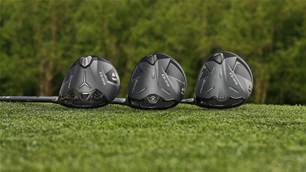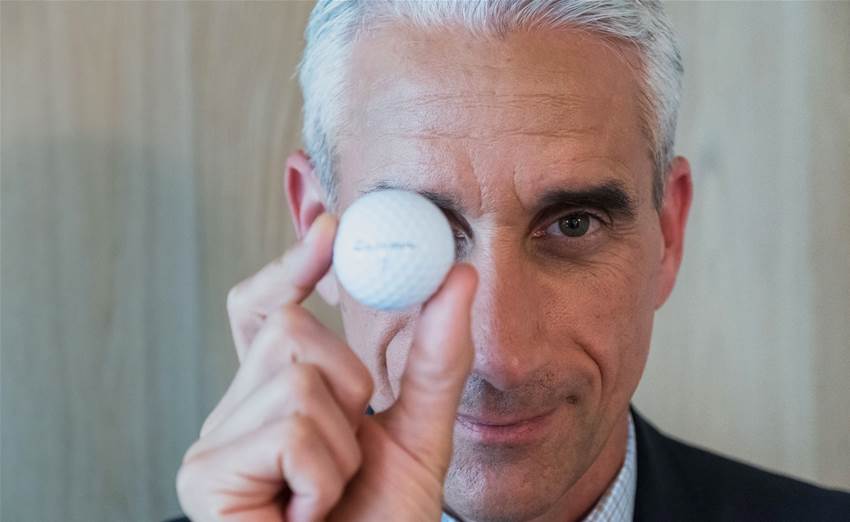Ever wondered what it is like to run one of the biggest golf companies in the world? Or how Tiger Woods’ contract works? Or even, where a golf CEO sits in the distance debate?
In light of the lack of tournament golf at the current time due to the coronavirus pandemic, we have gone back through the archives to find some previously unpublished content.
In this exclusive interview from the end of 2018, TaylorMade CEO David Abeles covers all things relating to the equipment sponsor of Tiger, Rory McIroy and Jason Day, among others, discusses everything from departing Adidas, to releasing new products and the effect of an equipment rollback and bifurcation.
Over a year removed from the sale of TaylorMade by Adidas, how do you feel the company is positioned after the change?
We initiated the sale process, pulling TaylorMade out from Adidas global back in the spring of 2016 and after a very diligent process to identify the right buyer and the right partner that would enable TaylorMade to continue to grow and continue to advance in the game of golf, we aligned with a New York based private equity group called KPS Capital and we signed and closed our deal on October 1st 2017.
So effective October first 2017, we were a standalone, privately held equipment and golf ball company, TaylorMade. Some of the larger markets around the world like the United States, Canada, Japan, Korea, the UK and continental Europe, TaylorMade already had free standing, independent, vertical organisations.

So, it was very seamless to transfer from Adidas specifically just to TaylorMade in those markets. However, in some other markets, Australia being one of the them, we shared office space with Adidas, we integrated our back office functionality with Adidas, and even though we managed the golf business separate from the big Adidas business as part of TaylorMade Adidas Golf, it took us 12 months, we had a 12 month separation agreement to be able to stand up a direct legal entity infrastructure here in Australia to service the Australian market on behalf of just TaylorMade. So, on October 1st 2018 we officially separated from Adidas in Australia, and now we have formed a legal entity, a wholly owned subsidiary of TaylorMade global called TaylorMade Australia.
The engagement with our new financial sponsor has been fantastic. As much as they were interested in buying TaylorMade, we were equally as interested in having them buy TaylorMade. And the reasons for that, their competencies and their background is owning companies that have incredible capabilities of manufacturing complicated, complex products.
So, most of their assets are more industrial manufacturing assets, but when we talked with them they asked what was some our real opportunities were moving forward, and the answer was taking the ideas that we have for innovation that drives better product performance for the future and be able to industrialise them. And while we have very dynamic supplier base and partner base on the manufacturing side, the technologies that we continue to bring to market are only going to continue to improve. Having a partner like KPS that understands how to support our needs in building those types of products and product technologies has been fantastic.
"Quite candidly we now follow the compass in terms of when we launch products not the clock. And that has served us extremely well over the past four years." - David Abeles.
Under your watch the product life cycles have changed for TaylorMade, products stay on the market for longer and there is more consistency. Will that business model of how you launch product continue to change under KPS?
One of the things that gets confusing when outside parties that don’t know TaylorMade or KPS try and understand the relationship. TaylorMade is simply a loyal company of KPS, and the KPS partnership essentially expects our leadership from my office down through the organisation to run and lead the company and make strategic decisions that are in the best interest of continued growth and sustainability in our business.
KPS really does not dictate strategy to TaylorMade, our management creates the strategy which then ultimately is effective in the global market.
So, in terms of product life cycles, I’ve been back with the company for four years this Spring, and I was gone for a couple of years and there was quite a bit of dialogue that TaylorMade was bringing too many products to market to quickly. And quite candidly, that’s absolutely right, we were.
One of the real tenants we put in place when I returned to the company with our Research and Development (R&D) teams and product creation team, is the notion that any product we ultimately choose to bring to market, it has to be measurably better, in both form, which is what the product looks like, the design language that creates energy and excitement through the eyes of golfers, and function, which is technically how it actually works.
And we have these tenants in our organisation these past four years that essentially say “If we can’t be better in form and function to our prior products and relative to the competitors, we will not bring a product to market.
So, quite candidly we now follow the compass in terms of when we launch products not the clock. And that has served us extremely well over the past four years.
That commitment to only releasing product after extended testing periods and improvement, I am guessing is aimed at not only ensures performance for golfers testing but wins back some consumer confidence back a well?
One of the things that we have learned is, and I think that golfers are starting to appreciate, is that because we are humbly managing our relationships better with our golf partners and consumers, is that we are going to invest so heavily in technical improvements to help golfers play better, it creates great equity in our brand and our relationship with golfers and they are seeing that.
I will be the first one to say, we’re not perfect, but we are getting better every day and by virtue of the success of the company over the last three and four years, it’s been extraordinary. We will grow our business this year (2018) globally by almost 30 percent. And we are one of the largest manufacturers of golf balls and equipment in the world, so I am extremely proud of the work our team is doing and I am even more proud of the products coming from our team, that are providing us feedback from golfers that we are absolutely doing the right thing, so we are going to stay the course and continue to invest in better technology.
Changing tacts … one of the more noticeable changes to the company from the outside looking in, is the Tour staff. What was once one of the biggest, to now where there is less than 10 official staff players. Is there a driving force in that move or has the industry and Tour sponsorships changed?
Any company that wants to continue to move forward has to assess and deliberately review their strategies annually if not more regularly. And really validate that strategy that has been developed the prior year, generation or ten years ago, whatever that time frame is.
Is it still relevant to today’s market?
And that is precisely what we have done at TaylorMade and as it relates to sports marketing. We used to deploy a strategy that was have more TaylorMade products in the bag of more Tour players and tell the message that TaylorMade has more players than anybody else.
Quite candidly, for many years that strategy served us well, because there was a high degree of visibility in and around the Tour with those playing TaylorMade.
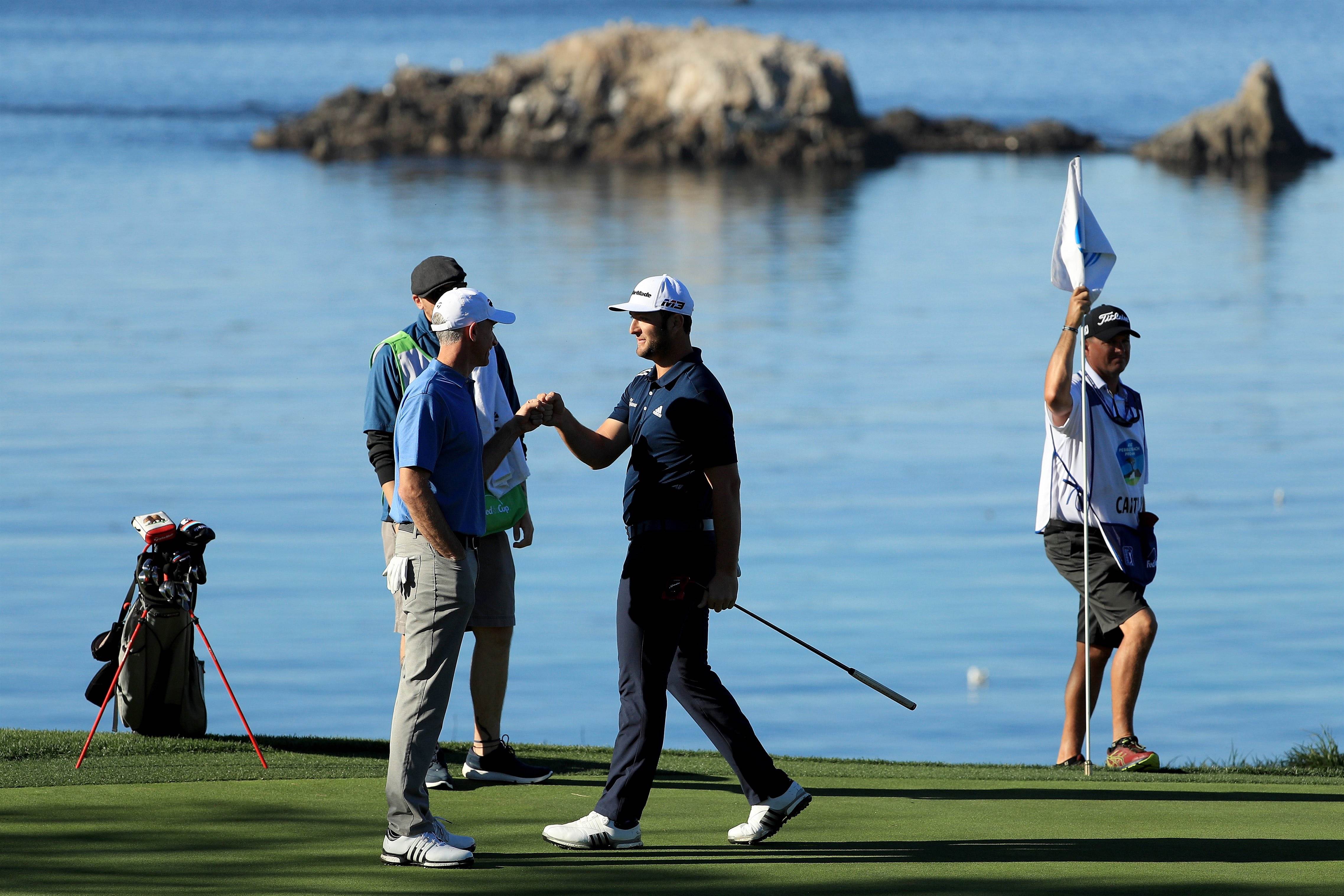
Don’t get me wrong, that is still critically important to us, because we believe not only on the PGA Tour but the worldwide Tours, we are in a very aspirational industry where golfers want to be sure that whatever they buy is also validated by the world’s best players, and if the world’s best players believe that the products they are playing are going to help them win or excel in their profession, then subsequently, golfers will believe that it will help them play better.
Those two things are intrinsically linked. A few years ago, we took a hard look at our Tour staff, and yes we had many players, and even to this day, we have a lot of players around the world, with contracted athletes in every major market around the world. But really our marketing messaging has pivoted and we talk with greater length and intensity around a smaller group of players, that really help carry our message in modern day media in a way that we couldn’t do historically.
For example, when I think about whether it is Tiger Woods or Rory McIlroy or Dustin Johnson or our hometown hero in Australia Jason Day or Jon Rahm and a series of athletes that we are going to continue to work with, these athletes that I have just mentioned, they have audiences that in their own way, range up to 20 million golfers that follow the things that they say and do, and want to use the products that they play. So, we have always worked very closely with the world’s best, we believe that they can help us promote our products.
"The best players in the world have to choose the best performing products to ultimately help them achieve their objectives. And so, whether they are contracted or not, the message is more players and more of the best players on the world’s greatest stages of professional golf and all around the world are choosing TaylorMade." - David Abeles.
But the key to me, and one of the really great stories that went untold in 2018, was the fact that there was an awful lot of non-contracted players on the PGA Tour and other Tours that are choosing to play whatever products they want. Even if you look at the winners of the 2018 British Open, US PGA Championship and US Open, those athletes played TaylorMade. And they are not even part of this discussion of our Tour staff. And there is an adage in our organisation that if contracts and Tour relationships weren’t monetarily based, they were solely based on performance, then TaylorMade would have more products in play than any other brand.
And a real good example of that was back in 2016, when Nike decided to get out of the equipment and golf ball business. Nike had 25 contracted athletes playing their equipment and golf ball. At that point in time that they no longer were making products, 22 of those 25 contracted athletes came and played TaylorMade. That wasn’t contractual that was because they believed that TaylorMade were the best products to help them play better. So, that’s how we think about athlete relationships to help inspire golfers to connect with the TaylorMade brand.
In that non-contracted space that has become a big story in golf equipment, do you think it is almost a better story having players without a contract winning major titles with TaylorMade product than those contracted to the company?
I think the message is, the best players in the world have to choose the best performing products to ultimately help them achieve their objectives. And so, whether they are contracted or not, the message is more players and more of the best players on the world’s greatest stages of professional golf and all around the world are choosing TaylorMade.
And whether that is by direct association in a formal relationship for someone like Tiger or Rory, or whether it is in an informal relationship where we provide someone with product and services that aren’t under contract.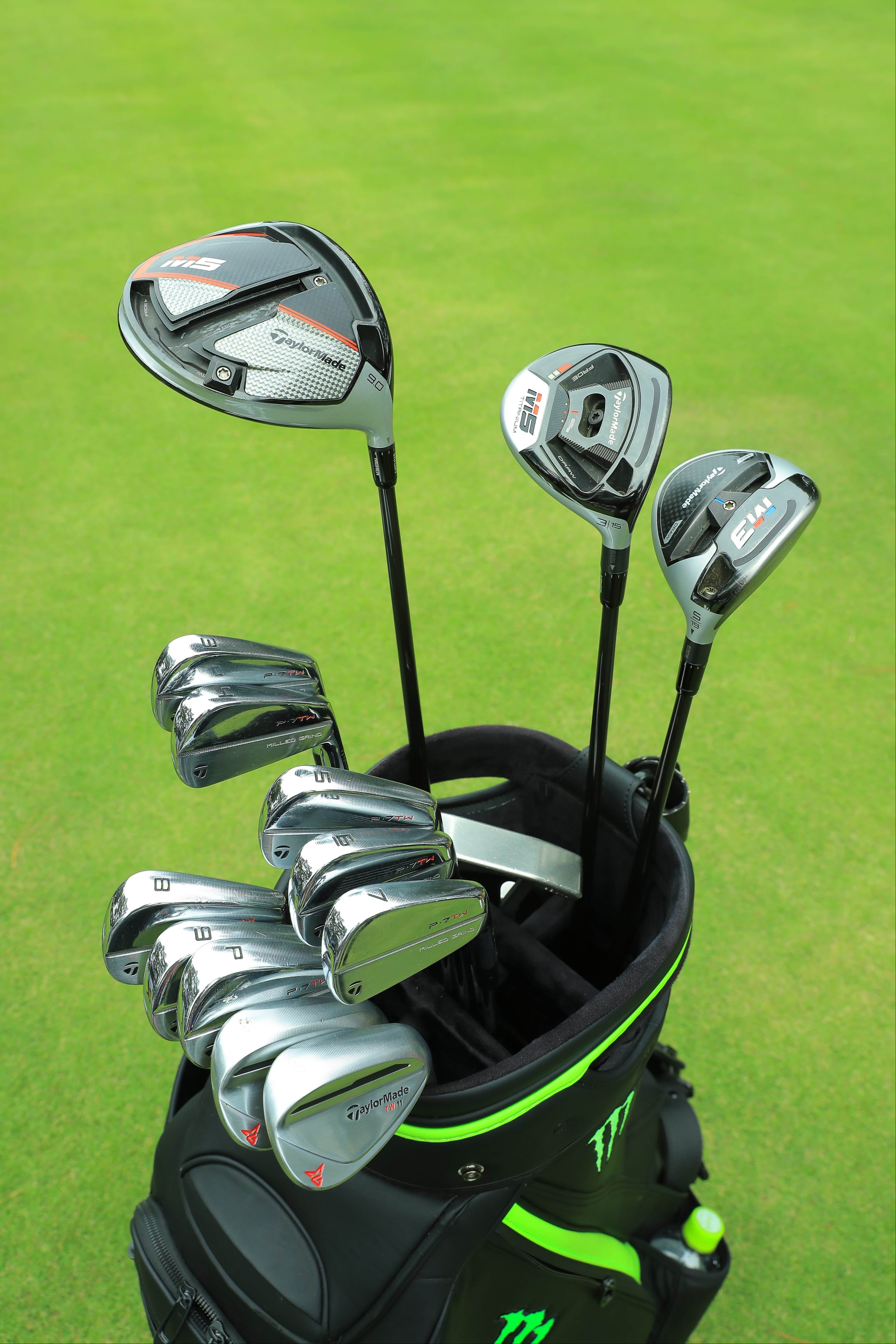
But make no mistake, even the contracted players, they chose the companies that they believe are going to make the products that are going to help them win. And so it is not just ‘TaylorMade wrote me a nice contract’. It is that with TaylorMade I feel confident that the products they are going to provide me with are going to help me be my best. And that’s why Tiger Wood came to TaylorMade. Rory McIlroy came to TaylorMade because he believed, and said this publicly, that we unconditionally have the finest performing golf ball in the world.
RIGHT: Tiger Woods' most recent PGA Tour win came with 13 TaylorMade clubs in the bag. The 15-time major winner part of the company's evolving Tour staff. PHOTO: TaylorMade.
I will be the first one to say, we don’t have more golf balls in play than our primary competitor and our market share isn’t as big as our primary competitor – I hope it will be over time – we now know, that we have the best performing golf ball.
It may not be the number one ball in golf, but quite candidly, many of the best players in the world are not playing the number one ball in golf. Five of the top-10 of the best players in the world are playing TaylorMade golf balls (At the time of interview). And so, it really is all about performance.
The one thing that we have chosen to do, which is the hardest path to choose in any business, is to really lead in innovation. These players that are with us, whether they’re contracted or not, they see that, they’re inspired by it and they believe in it.
Three of your biggest name staff players don’t wear a TaylorMade hat. Is that another sign of the evolution of sponsorship?
Of course we would love to have every one of our players wearing TaylorMade headwear, but that isn’t always possible.
No matter how you look at it, the business economics won’t always add up.
But what is most important to us, is that we get to work with the those athletes, Tiger is a great example.
Developing products for him, that subsequently lead to developing products for golfers, and again Tiger’s following is second to none. Tiger by his own accord loves to talk about TaylorMade. Because as he has made this latest comeback, he has realised that he had to create a golf swing and that perhaps the technology that he was using historically, wasn’t going to serve his new golf swing in the future.
In fact, I just got done meeting with him a few weeks ago, and was thrilled to hear him talk about his willingness to test new products because of where he is in his professional life and how he swings the golf club today.
So, it is another testament to how these athletes view the company. But to go back to your original question, certainly would love to have them wear TaylorMade hats, but we do a wonderful job with those athletes communicating to the world that they are TaylorMade athletes. So, whether they have branding on television, or they are pushing content through their social channels or we are creating content for our own channels, Tiger and Jason and Rory even though they may have a swoosh or their own logo on the front of their hat, they all play TaylorMade and I believe most golfers around the world know that.
In your brief time with Tiger on staff, how differently does he move the equipment needle with golfers than other Tour players?
That is kind of the old adage. Can you build an algorithm to tell how any given athlete can either move the needle or inspire golfers to buy products.
And a lot of individuals will look at that and say ‘How do I find a return on investment on any particular athlete?’. We don’t really look at it like that.
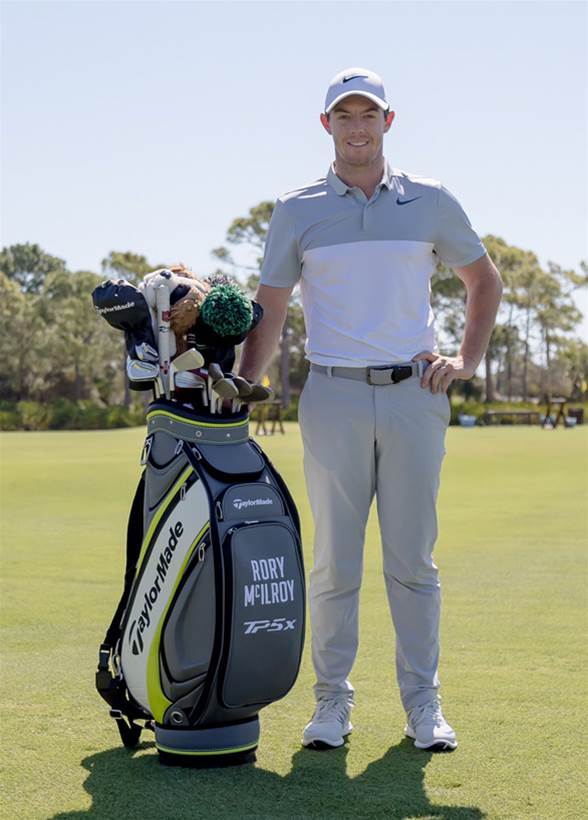 We look to the Tour to not only help validate the things we are doing, but to help provide insights into the future. So, when we get to test new technologies, advanced technologies that aren’t even out yet, and test those technologies with the world’s best players, that’s R&D effort for us.
We look to the Tour to not only help validate the things we are doing, but to help provide insights into the future. So, when we get to test new technologies, advanced technologies that aren’t even out yet, and test those technologies with the world’s best players, that’s R&D effort for us.
RIGHT: McIlroy has been vocal since his switch to TaylorMade and its golf balls and is one of the players on staff who goes without a TaylorMade logo on his headwear. PHOTO: TaylorMade.
Tiger has been very involved in advanced technology for TaylorMade.
He has provided an incredible feedback in his willingness to not only test these products but to provide us an even deeper understanding of how they work on his level. But the other thing I love, whether it’s Tiger or Rory or any of our athletes, they also help us with amateur play.
Believe me, the technologies that we develop, while they benefit the world’ best players, they are really designed to help everybody else. And that’s really, if you listen to Tiger closely, or Rory, in their discussions about the products that they play, their comments are, ‘Well this will definitely help me and my game, this is really going to help amateur golfers all around the world to a greater extent than it will benefit me’.
"Making the game more difficult is not in the best interests of the game. Making the game more accessible, making it easier to play, making it more exciting, making it more approachable, let’s focus on those things." - David Abeles.
So, we view them as not only an extension of our company in terms of the cultural and environmental attributes that we build into this great organisation, we view them as an extension of R&D, we also view them as individuals that are really excited about carrying the message of our products and technology to golfers everywhere.
That’s kind of how we look at it. They are members of our team. When we say Team TaylorMade, that’s not about ‘Oh, you’re a contracted athlete’ you are actually embedded as part of the cultural fabric of our company. And every one of the athletes that we have talked about today, and the 100s around the world, we choose them for those reasons. And I am proud of that, because we have built a great team.
You have previously said any change or rollback to golf equipment would be detrimental to the game, obviously people might interpret that to be purely self-preservation from a brand perspective. Why do you think a rollback or bifurcation would be so harmful to golf?
The reason that we explicitly believe that any rollback in any form would be detrimental to the game, is because when you play golf as a golfer whether as an amateur or professional, I have yet to see any golfer walk off the 18th green saying ‘This game is way too easy, I hit it way too far, my scoring is way too low, so I am going to go and figure out how to do something else’.
I believe that the future of golf, like the future of any industry has to advance, it has to move forward. Which means technology is going to drive, at some level, the advancement of the industry.
So, even the concept of going backwards to me is counterintuitive to where we think the game needs to go.
Making the game more difficult is not in the best interests of the game. Making the game more accessible, making it easier to play, making it more exciting, making it more approachable, let’s focus on those things. Let’s not focus on rolling the golf ball back to preserve literally one, one hundredth of one percent of the golf courses around the world, which quite candidly don’t need any preservation.
I’ll give you a perfect example.
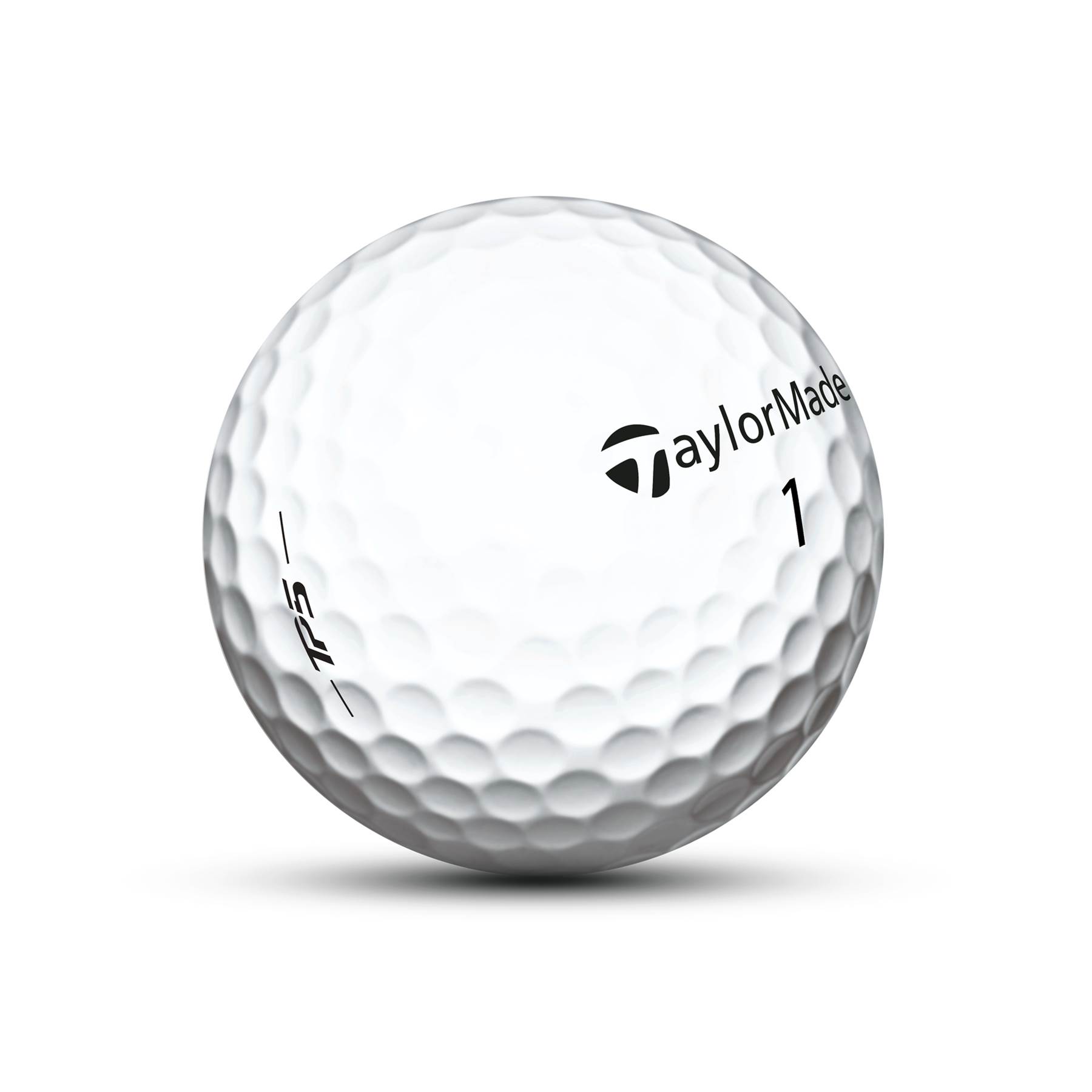 I was in Melbourne and for the first time in my life I got a chance to play Royal Melbourne. I had been wanting to play this golf course for my entire time in and around golf, 25 years I have always wanted to play there. And I had this incredible experience out at Royal Melbourne.
I was in Melbourne and for the first time in my life I got a chance to play Royal Melbourne. I had been wanting to play this golf course for my entire time in and around golf, 25 years I have always wanted to play there. And I had this incredible experience out at Royal Melbourne.
We played the course from the white tees, which was probably, my guess is 6,500-6,600 yards. And do you know what? The way the golf course was setup, the way the greens are setup, and we had some pretty good players in our group, it is a very difficult golf course. And in the end it had nothing to do with yardage, you had to hit the right shots at the right time, and make the right putts and read the greens, it had nothing to do with the fact that playing a TP5 or TP5x golf ball gave me two or three miles an hour more ball speed. Or playing a TwistFace driver reduced my dispersion or created more accuracy for me.
So, I just don’t believe that there is an issue in distance in golf. And I really don’t think that golfers want to go backwards.
I also believe on the concept of bifurcation, and this is really on behalf of TaylorMade and my beliefs as well obviously, that consumers in this sport, are very fortunate, because they get to play the same products that the world’s best players get to play. And they get to play the same golf course in many regards as those players get to play. So, creating two separate standards makes no sense to me.
And I truly believe this, and I appreciate that the USGA and R&A are coming together to do another round of distance reporting, but we have so much distance reporting and analytics that would indicate at every level that is not the issue with the growth of the game of golf.
The issue with the growth of the game of golf are the things that you would actually implement that would advance the game and advance technology and do the things that we just talked about than otherwise.
So, I don’t think it makes any sense.
It has nothing to do with preservation, although I do believe that some manufacturers and more importantly golfers would leave the game if there was a rollback.
So, I will leave you with this point on this question, when we heard the dialogue about a 20 percent rollback in golf ball, I just want you to think about the 12 handicapper that you play golf with on a Saturday or Sunday, that hits the golf ball today 230 or 240 metres off the tee. And that individual is going to show up, if there was theoretically if there was a rule change, and hit the golf ball 190 to 200 metres off the tee.
Do you think that individual is going to love playing the game more or do you think they are going to be confused as to whether they want to come back?
It makes no sense. So, as you can tell I’m pretty passionate about our position.
Is your personal position in any way influenced through your time with Acushnet and working with Wally Uilhein? Who has been another strong industry voice on this.
I have 25 years’ experience in golf. I love this industry, like other executives in the industry that do that have a real good pulse on the market and importantly golfers, but are our views are our own.
Certainly I am well aware of what Wally’s views were while he was running Acushnet, I spent six years working for him, but that was literally decades ago. And the basis of our position on this is really all around my experience, our company’s experience in golf, and most importantly, put me aside, put our company aside, the data that we have acquired from working with amateur golfers for over forty years.
"Whether you look at the golf industry, or any other consumer product industry, or even outside consumer technologies, if you compare where those industries were 10, 20, 30 years ago to where they are today, there really isn’t a comparison." - David Abeles.
We have a database of millions of golfers from around the world and golf swing data from millions of golfers around the world and when you really look at the data, it would clearly indicate, that golfers aspire to get better not go backwards. So, we base our decisions on real data, we base them on real connectivity to the feedback from golfers and those views have been created over 40 years at TaylorMade and I am proud to be able to carry our messages forward.
Does the ongoing process of distance insights gathering etc. affect your R&D in the golf ball space moving forward until there is a decision?
Short answer is no.
If you really believe that golfers will benefit from advanced technology, and real innovation from companies like TaylorMade you have to commit to that and you have to drive that home.
So, when you step over a shot if you have any doubt about what you’re doing the likelihood of optimising that shot will be compromised. At our company, we are full bore ahead on bringing technologies to market. And if at some point in time, theoretically, there is a rule change, we will still be that much further ahead than our competitors because we have been stretching the envelope on quite a few ways to create great products.
For decades we have been building products around current USGA and R&A governance, and every year it is a standard not only to our company but importantly to the industry and those that play our products that we keep finding better ways to drive improvement and so, no. We don’t think about that, we think about how we can get better and how we can bring better product to golfers.
Finally, you have been in the golf industry for 25 years, how much has the equipment manufacturing business changed in that time?
Whether you look at the golf industry, or any other consumer product industry, or even outside consumer technologies, if you compare where those industries were 10, 20, 30 years ago to where they are today, there really isn’t a comparison.
So when you think about things in that context and start to project out 10, 20, 30 years from now as things continue to evolve and in some cases transform and change, almost everything has changed. But what hasn’t changed, is the ultimate desire for golfers to play better golf and their love for the sport.
So, it kind of comes back to your question about the governing bodies, think about a continued metamorphosis and advancement of the ways consumers think about products and how technologies help them play better and their aspiration and desire to move forward and improve it really is counterintuitive to think about any kind of a rollback on anything. Because I think what would happen is, golfers would be disenchanted because they are part of something that isn’t advancing, that is actually going the other way. That is not good for the game of golf.
So, how we approach this and apply that to our business practices and product development, lifecycle management, or even our business operations, in the end we follow the compass. This isn’t about timing, this is about how we find better ways to run our company, better ways to build better products, bringing those products to market when they are ready, really provide benefits to golfers, and so I expect over the next decade or two, one thing that is inevitable in the world today is change.
So, the companies that embrace that and view that as an opportunity to improve and build a culture around real innovation and continued advancements, I believe in the end are going to win. And fortunately I think we are on the forefront of that.
Related Articles
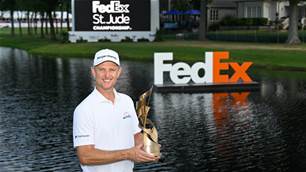
Late blooming Rose wins playoff opener in extra time
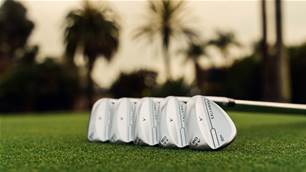
New Release: Callaway announces new Opus SP Wedges
